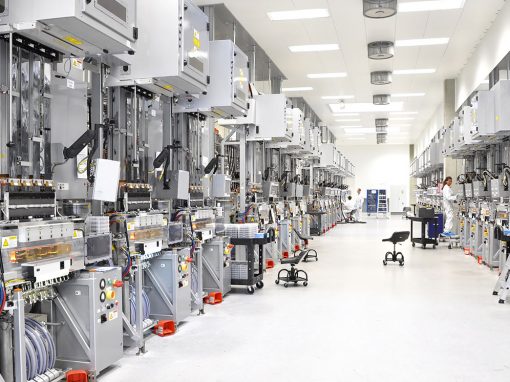
Power Generation, Transmission, & Distribution
The Power Generation, Transmission, and Distribution sector is undergoing a transition towards renewable energy sources such as solar, wind, and hydroelectric power to mitigate climate change and reduce reliance on fossil fuels. Companies are investing in renewable energy projects, developing grid integration solutions, and adopting energy storage technologies to support the integration of intermittent renewable resources into the power grid. Balancing renewable energy generation with grid stability, optimizing dispatch strategies, and managing energy storage assets are critical for ensuring reliable and resilient power supply in the industry.
In addition, the Power T & D infrastructure is aging and requires modernization to enhance grid reliability, efficiency, and resilience. Companies must invest in smart grid technologies such as advanced metering infrastructure (AMI), distribution automation, and grid analytics to optimize grid operations, reduce energy losses, and improve system reliability. Deploying sensors, communication networks, and predictive analytics can enable real-time monitoring and control of grid assets, enhance situational awareness, and enable proactive maintenance.
Importantly, this infrastructure is increasingly interconnected and vulnerable to cyber threats such as hacking, malware, and ransomware attacks. Companies must strengthen cybersecurity defenses, implement robust security protocols, and adopt best practices for securing critical infrastructure assets. Investing in cybersecurity technologies, conducting regular vulnerability assessments, and enhancing incident response capabilities are essential for protecting against cyber threats and ensuring operational resilience.
There is also a shift occurring towards decentralized energy systems and microgrids that enable localized generation, distribution, and consumption of electricity. Companies are adapting to the rise of distributed energy resources (DERs) such as rooftop solar, energy storage, and demand response programs, as well as developing strategies to integrate DERs into the grid. Implementing microgrid solutions, establishing grid-edge intelligence, and fostering collaboration among stakeholders can enhance grid flexibility, optimize energy use, and improve resilience.
Additional challenges include integrating energy storage technologies such as batteries, pumped hydro storage, and thermal storage into the power grid to support renewable energy integration and grid balancing. Companies must optimize energy storage deployment, develop grid-scale storage projects, and implement grid management strategies to maximize the value of energy storage assets.
Furthermore, electrification of transportation and industrial processes is requiring companies to further invest in grid expansion, upgrade infrastructure, and enhance grid reliability to accommodate growing electricity demand from electric vehicles (EVs), electric heating systems, and electrified industrial equipment. Building charging infrastructure, implementing demand response programs, and integrating electric vehicles into grid operations are also essential for managing load growth and ensuring grid stability.
Red Chalk Group is a unique partner, offering extensive expertise in addressing these issues, enabling businesses to embrace the future of energy infrastructure and paving the way for a sustainable and efficient energy ecosystem.
How can we help?
Get in touch with us if you have questions.


